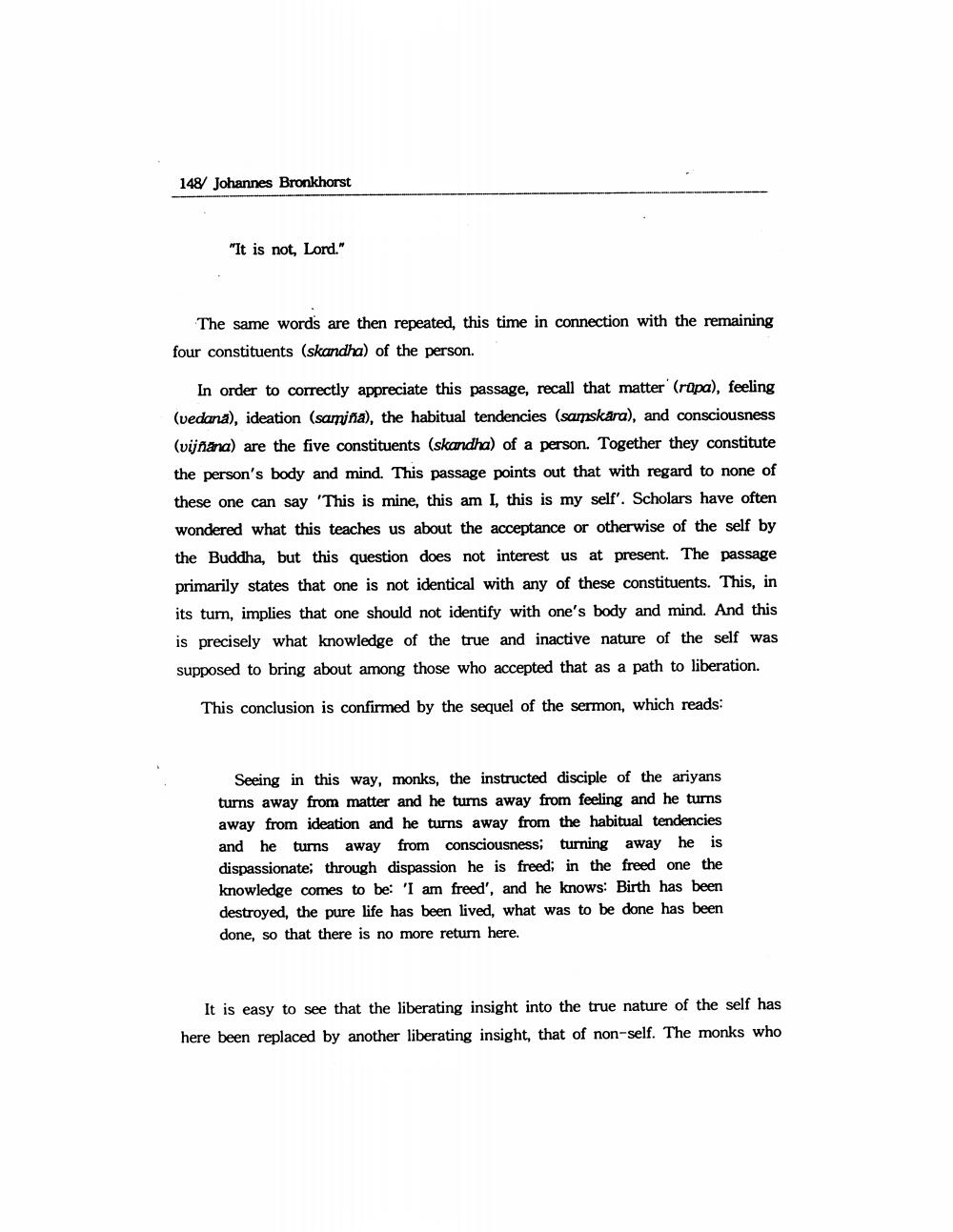Book Title: Self And Meditation In Indian Buddhism Author(s): Johannes Bronkhorst Publisher: Johannes Bronkhorst View full book textPage 8
________________ 148 Johannes Bronkhorst "It is not, Lord." The same words are then repeated, this time in connection with the remaining four constituents (skandha) of the person. In order to correctly appreciate this passage, recall that matter (rupa), feeling (vedana), ideation (samiña), the habitual tendencies (samskära), and consciousness (vijñāna) are the five constituents (skandha) of a person. Together they constitute the person's body and mind. This passage points out that with regard to none of these one can say 'This is mine, this am I, this is my self'. Scholars have often wondered what this teaches us about the acceptance or otherwise of the self by the Buddha, but this question does not interest us at present. The passage primarily states that one is not identical with any of these constituents. This, in its turn, implies that one should not identify with one's body and mind. And this is precisely what knowledge of the true and inactive nature of the self was supposed to bring about among those who accepted that as a path to liberation. This conclusion is confirmed by the sequel of the sermon, which reads: Seeing in this way, monks, the instructed disciple of the ariyans turns away from matter and he turns away from feeling and he turns away from ideation and he turns away from the habitual tendencies and he turns away from consciousness; turning away he is dispassionate; through dispassion he is freed; in the freed one the knowledge comes to be: 'I am freed', and he knows: Birth has been destroyed, the pure life has been lived, what was to be done has been done, so that there is no more return here. It is easy to see that the liberating insight into the true nature of the self has here been replaced by another liberating insight, that of non-self. The monks whoPage Navigation
1 ... 6 7 8 9 10 11 12 13 14 15 16 17 18 19
